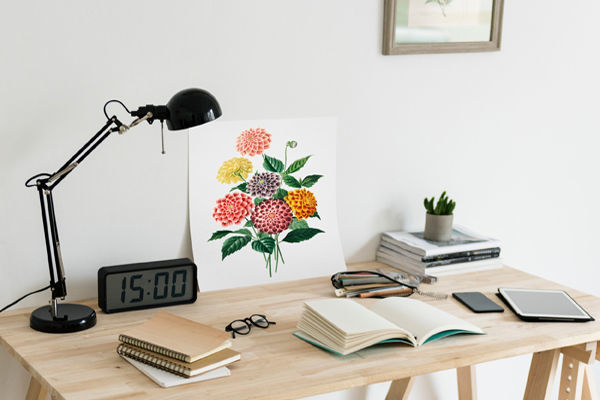【#第一文档网# 导语】以下是®第一文档网的小编为您整理的《如何制作论文海报【英语】》,欢迎阅读!

Posters Posters are much more similar to talks than they are to papers. However, most posters suffer from being prepared like manuscripts. Remember that people at meetings are usually burnt out! Do you enjoy reading a lot of fine print when you are viewing posters? The take-home message should be a simple readily available package. You should present only the headlines and the briefest explanation to make your point. Everyone who walks by your poster should immediately know your question and know the answer: those people who are interested can ask you to explain in more detail and can read the paper when it is published. Your introduction should be no more than a few sentences stating the conventional wisdom or explaining the justification for your question. Next, present your results as pictures (figures and photographs) that tell your story. Move logically from one result to the next, making sure not to include more information than your viewer can easily and quickly digest. You should either skip the methods completely or include only enough to make your results meaningful. The details of your experimental design, sample sizes, and so on should not be included. After each result, you can include one sentence of ‘discussion’ that makes each result more general or relates it to your big question. At the end of your poster you might want to include a sentence or two that explicitly answers the question that you posed at the start. Similarly, a sentence or two (but no more) explaining the significance of your results, how they fit into the big picture, is a useful way to conclude. One advantage of presenting a poster is that you can walk interested people through your story. This is more effective than asking them to read it. In addition, they have the opportunity to ask you questions about things they don’t understand or suggest other experiments and directions. Thus it can be a good use of your time to stay beside your poster and interact with viewers as much as possible when at a conference poster session. In summary, the poster should tell only a single story using only headlines. It contains few, if any, references and no methodological details. It has figures and photographs, but rarely tables. Details and statistical analyses are not included. Checklist: - Does the title summarise the main result? - Did you limit the introduction of your question to one or two sentences? - Did you clearly present the question(s) your poster will address? - Is your methods section extremely brief? - Are your results mainly presented as pictures? - Do you briefly explain the significance of each result? - Are each of your results presented in terms of your overall story? - Did you include a sentence or two briefly answering the question(s) posed at the start? - Does your poster contain only the headlines? Karban & Huntzinger 2006 How to do Ecology – A Concise Handbook. Princeton University Press. Points to consider when making a poster Posters can be made using PowerPoint software or Adobe Illustrator or Photoshop The poster will be printed out at A4: it can be designed to fit A0 but shrunk to fit A4 and needs to be readable at this size Use a very large font size – it needs to be able to be read by people standing a meter or so away at A0 size. If you can read A4 print when holding the paper hand straight in front of you, the font size is good A sans serif font is easier to read than a serif font – for example, this is Verdana (sans serif) and this is Times New Roman (serif) Do not make the background too complicated as it can distract Keep the story simple and keep the text concise: Readability is a measure of how easily the ideas flow from one item to the next. Text that has lots of grammatical problems, complex or passive sentence structure, and misspellings is difficult to read Break the text up into panels – it is not easy to read very long lines. The most common mistake is to add too much text Use good illustrations, graphs and photos Colours: avoid combinations like blue and yellow, and red and green (colour blindness is quite common), especially for lines that cross or symbols that need to be distinguished. Combining colours with different shaped symbols is a good way of ensuring everybody can interpret your graphs Keep graphs as simple as possible – remove panels that do not add to the story being told and remember to make the font size large When looking at a poster, eyes go first to the upper left corner and last to the lower right corner; consider putting something catchy or important on these spots Remember to include your name and affiliation If you can, save your poster as a pdf Take a look at the posters around the department and critically appraise them to learn what is good and what is not When presenting your poster, present the poster instead of reading the text aloud; think as if you are giving a tour of the poster and highlight only the main findings 本文来源:https://www.dywdw.cn/e50717eaf9c75fbfc77da26925c52cc58bd69071.html

